●Inheritance of Buddhist art and Traditional art
Buddhist painting is traditional art.
It is based on traditional techniques which have been handed down since ancient times.
I recognize that the Buddha’s image has a form prescribed by sutra, but there is also a world of free Buddhist painting, observing the form that should be protected.



【Power of Patterns】
I use Tempyo patterns for all the patterns in my work.
About 1300 years ago, during the reign of Emperor Shomu in the Tempyo period, Japanese culture opened up with Buddhist art. The Shosoin, which remains on the Todaiji Temple grounds, stores ancient documents and many works of art that tell of a breath of that period still felt today.
The ancient patterns on these treasures seem to be infused with life. I feel the power of these patterns is something common in the spirituality of Japanese people.
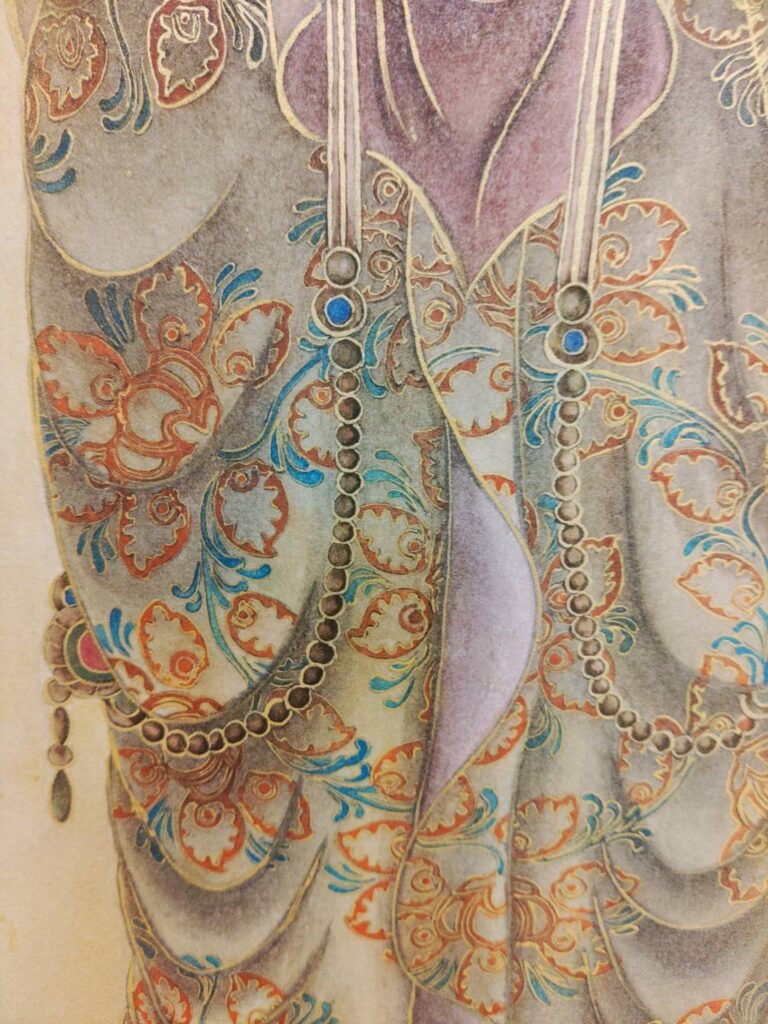
【Power of Water】
・Grind an ink-cake
・Scramble glue
・Dissolve pigments
・Rinse a brush
・Wash a pallet
All of the water I use is from the sacred water that I receive from the temples and shrines I visit. From my prayers, I receive the power of water.
【Power of Stone】
Natural mineral pigments, which are made by grinding them into a powder, have been used in murals and paintings since ancient times because of their beautiful, bright, and deep colors.
I feel that natural mineral pigments are power stones.
To paint the blue areas, I use azurite to express ultramarine color.
It has been used in Japan since ancient times, and in the national treasure “Kakitsubatazu” painted by Korin Ogata, used as the color of the swallow-tail flowers.
The green color of “Ryokusho” is called “peacock stone” and is often used as a power stone.
I paint the Buddha using rock paints made from this crushed peacock stone.
Production Scene
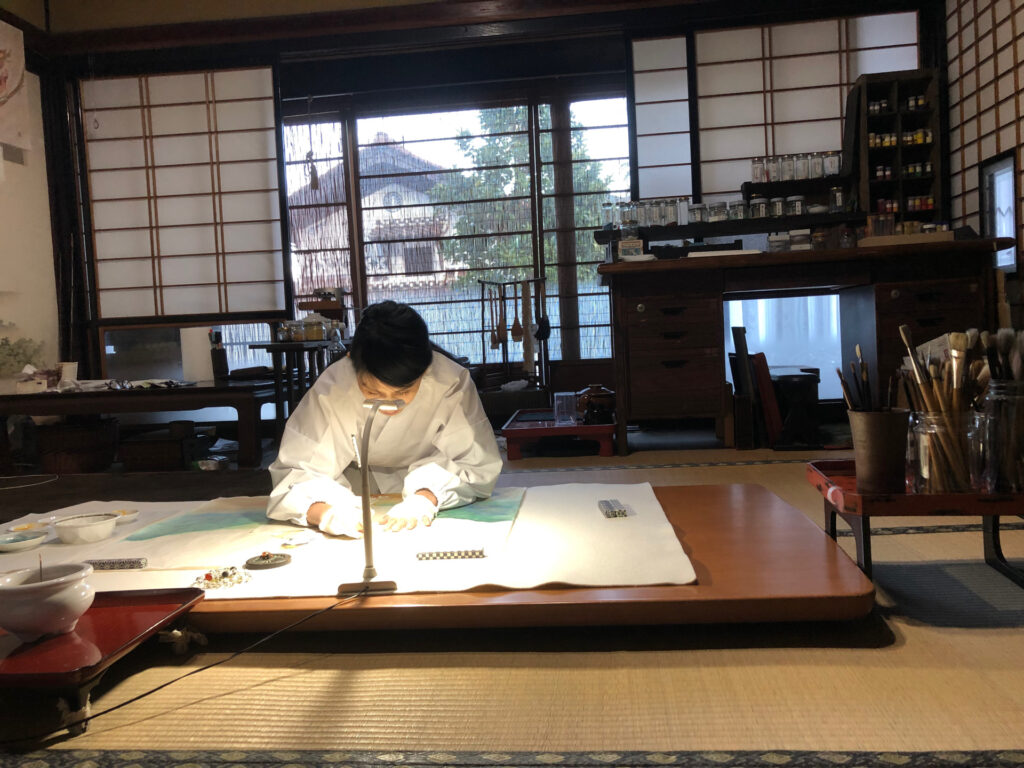
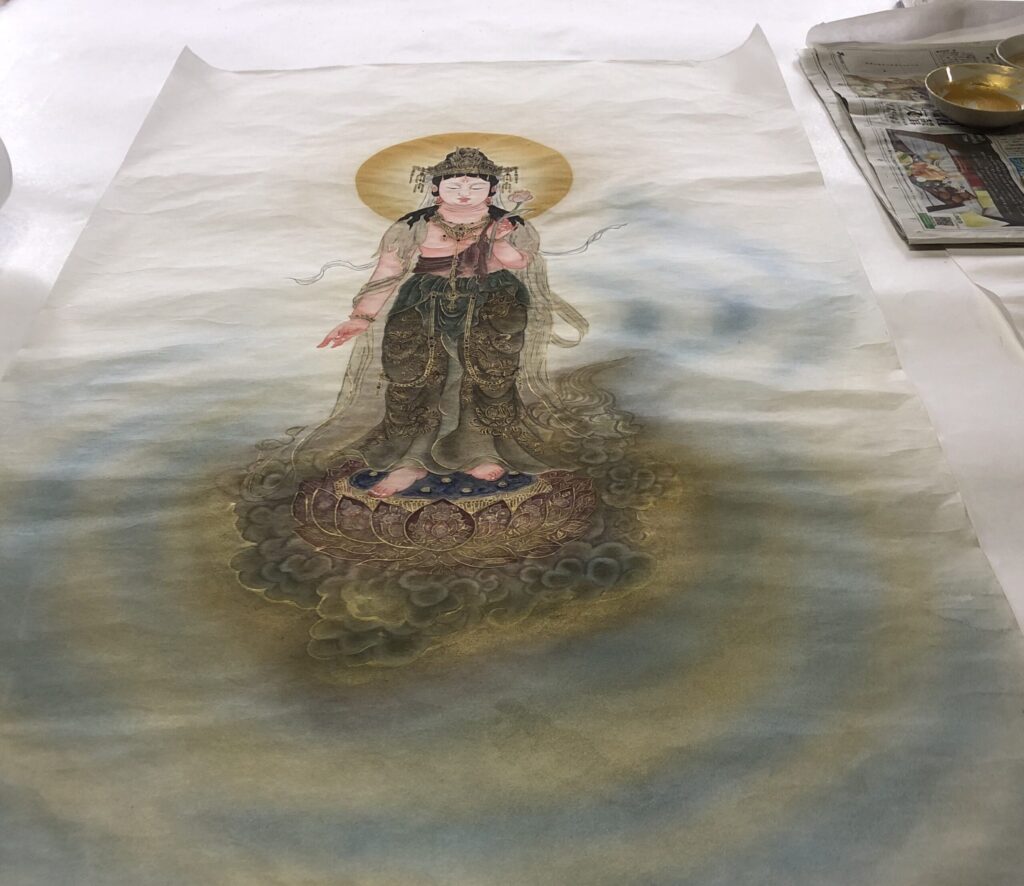
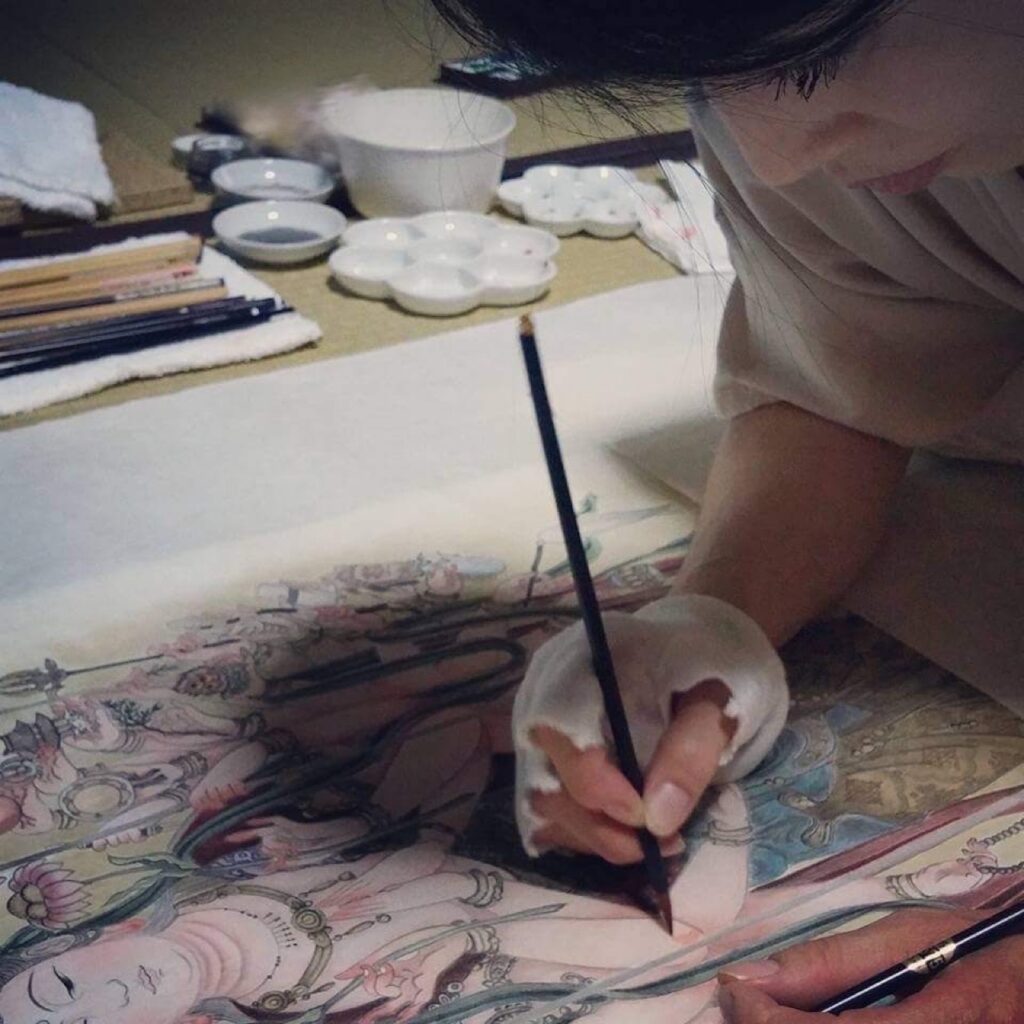
●Exhibitions at Various Locations; Works Delivered to
Main Exhibitors
・Daitokuji Temple Zuihoin Yokeian Tea Party, Kyoto
・Important Cultural Property Residence, Ishikawa
・Daiyuji Temple, Kyoto
・Dokoji Temple, Matsue
・Joanji Temple, Yasugi
・Used in the NHK TV program featuring Hanzawa Tsuruko, a master of tea ceremony, Germany
・Colorado, USA
・Kofu Town Hall, Tottori
・Dedication work to Kanagawa Shrine, Kofu, Tottori
・National Registered Tangible Cultural Property, Residence of Okuno Family, Yasugi, Shimane (Scheduled for April, 2023)
・Dedication work to Kiyomizudera Temple, Yasugi, Shimane (Scheduled for the end of 2023)
●Buddha painting class
Through the process of drawing Buddhist images, the inner Buddha and soul come face to face, I wish that throughout their life it will support them.
I began offering classes since 2018 and our students range from the second graders in elementary school to their 60s.

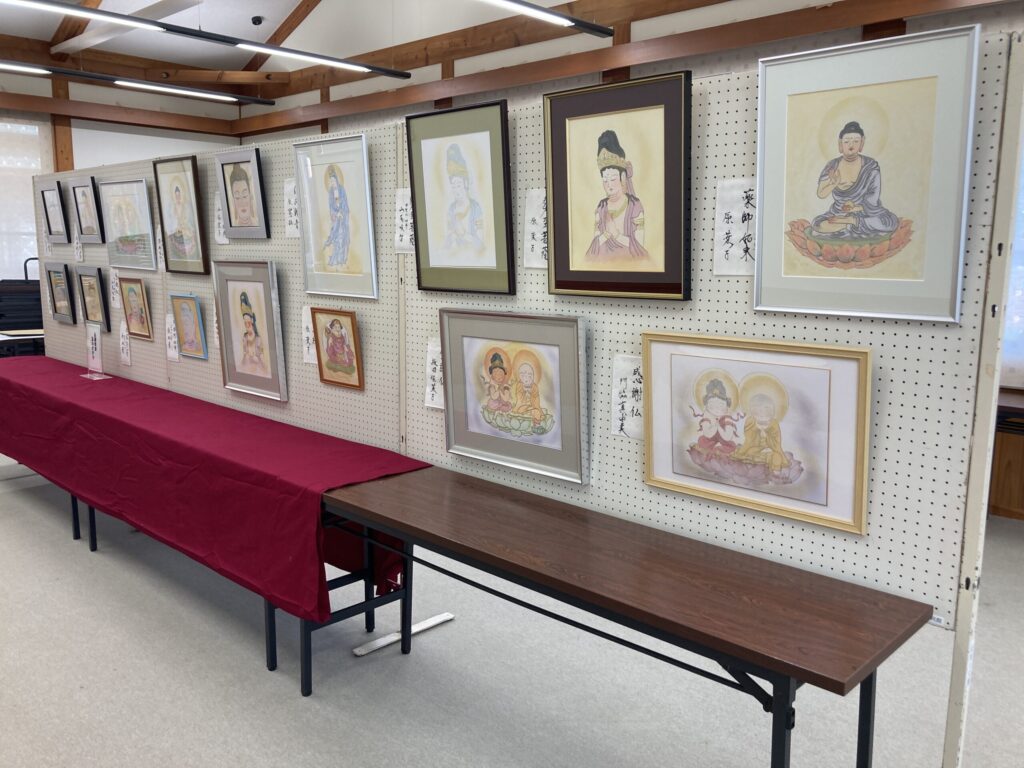
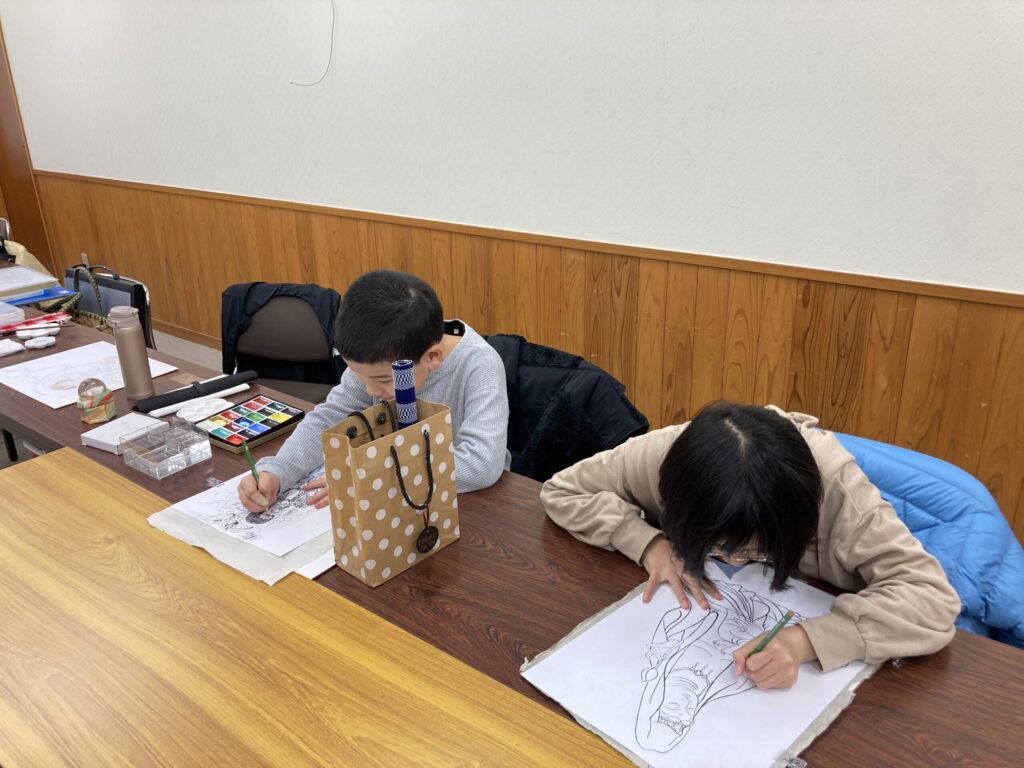
In our daily lives, we are filled with various problems. When I paint Buddha, I find myself calmly and objectively reevaluating various problems in a silent dialogue with Buddha. Painting allows us to immerse ourselves in the world of the Buddha and face what is within our own hearts.
It is you who make offerings to the Buddha, you who are offered to the Buddha, you who are part of the Buddha’s world, and you who are alive with all the Buddhas around you.
In this place, there is communication with

